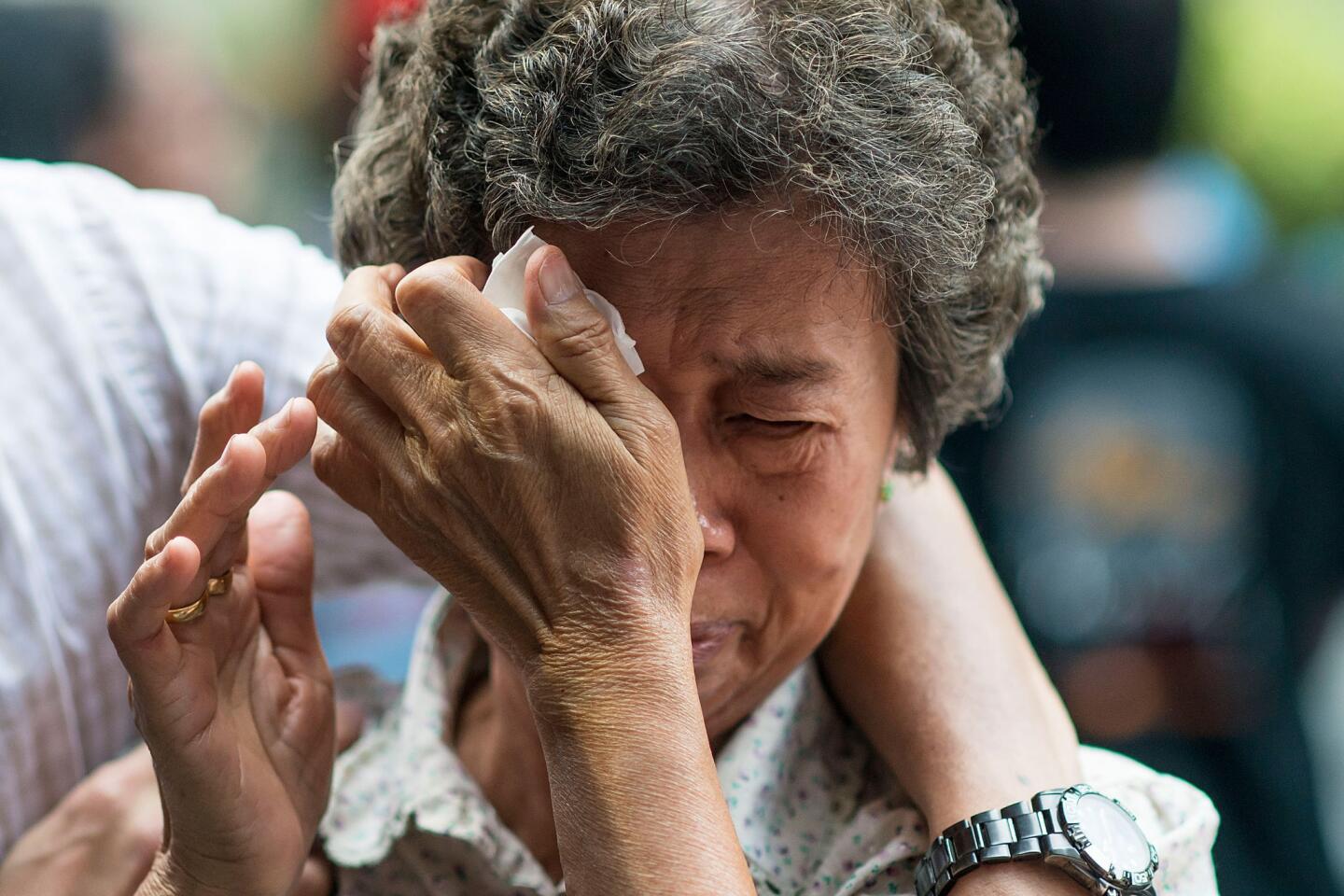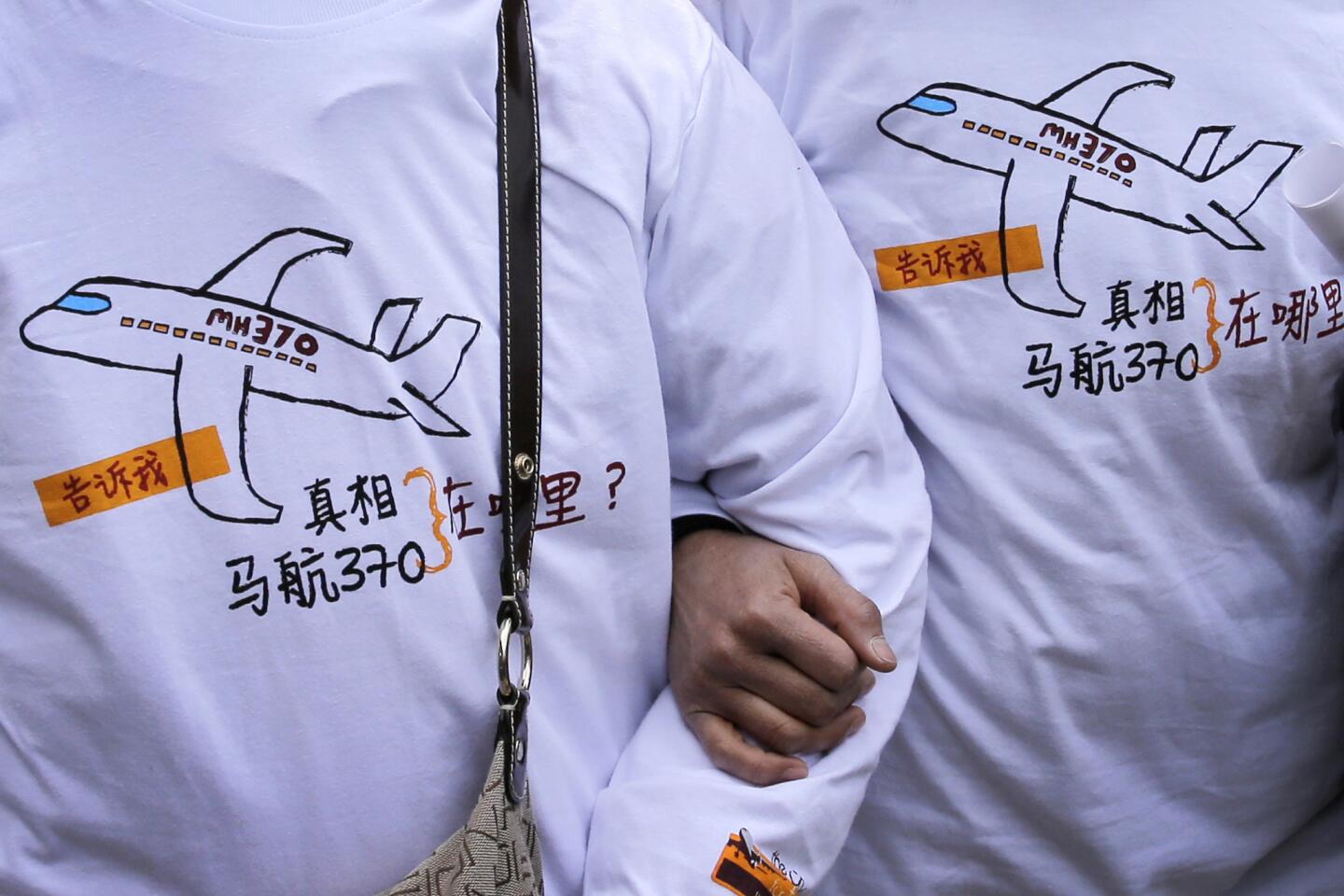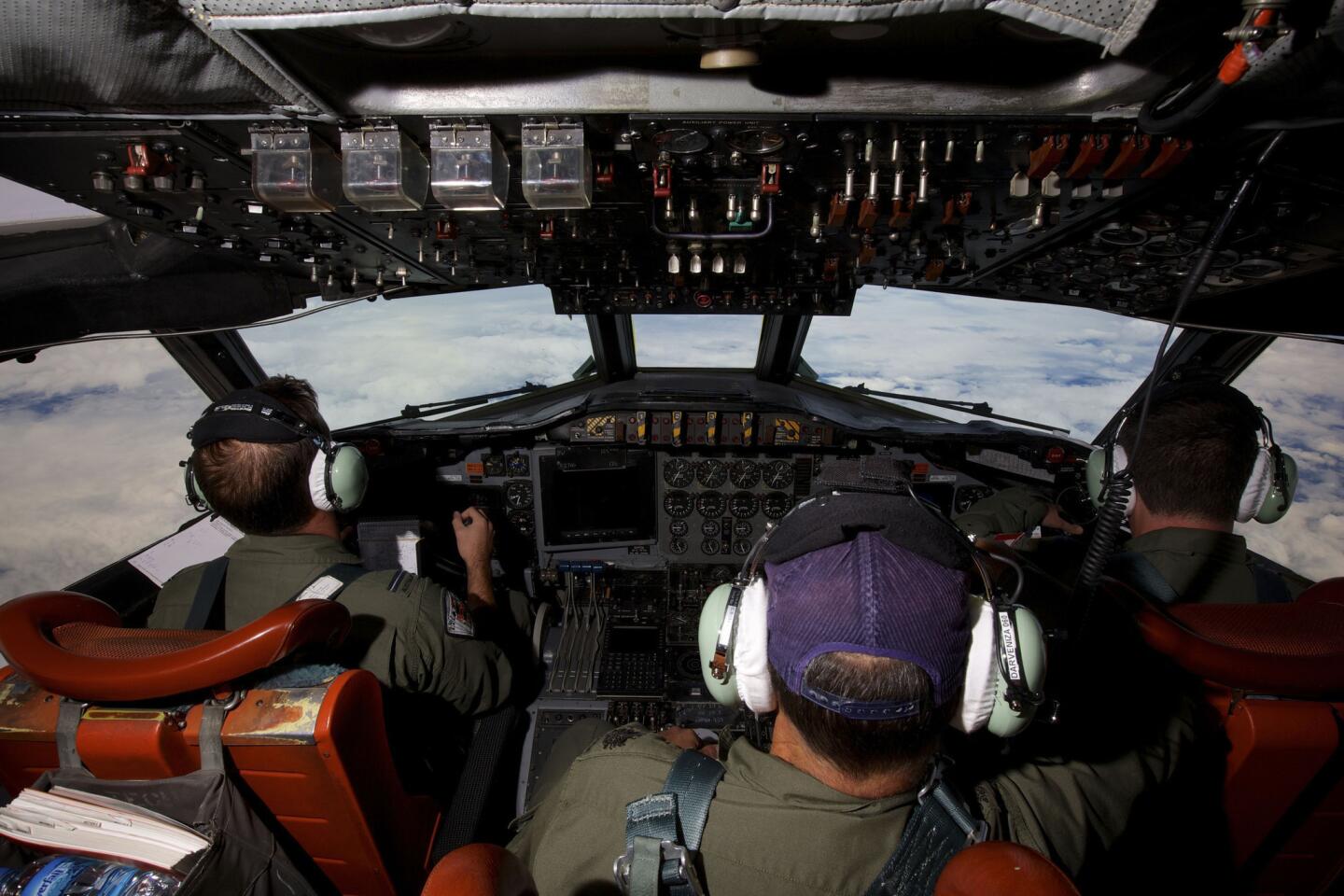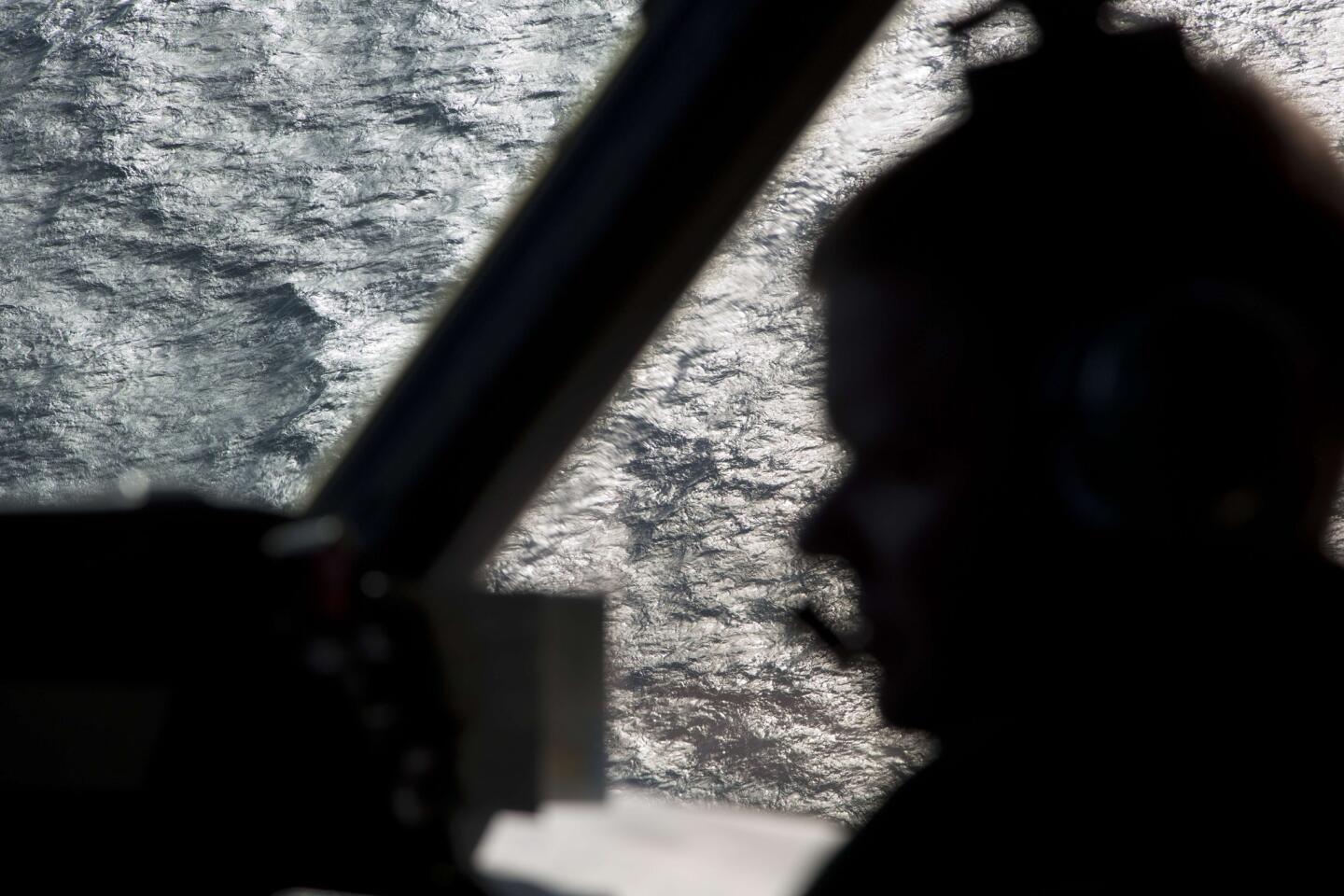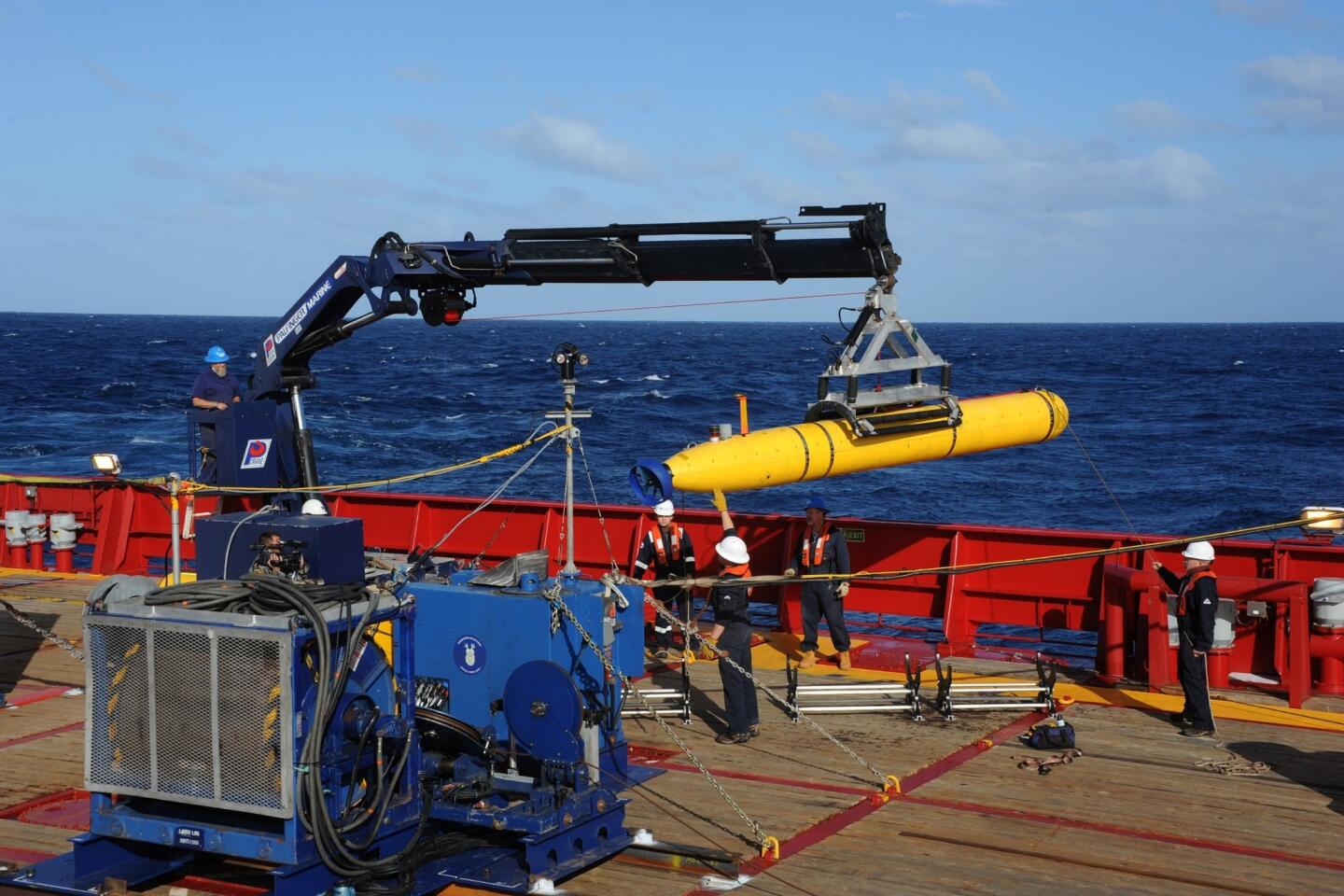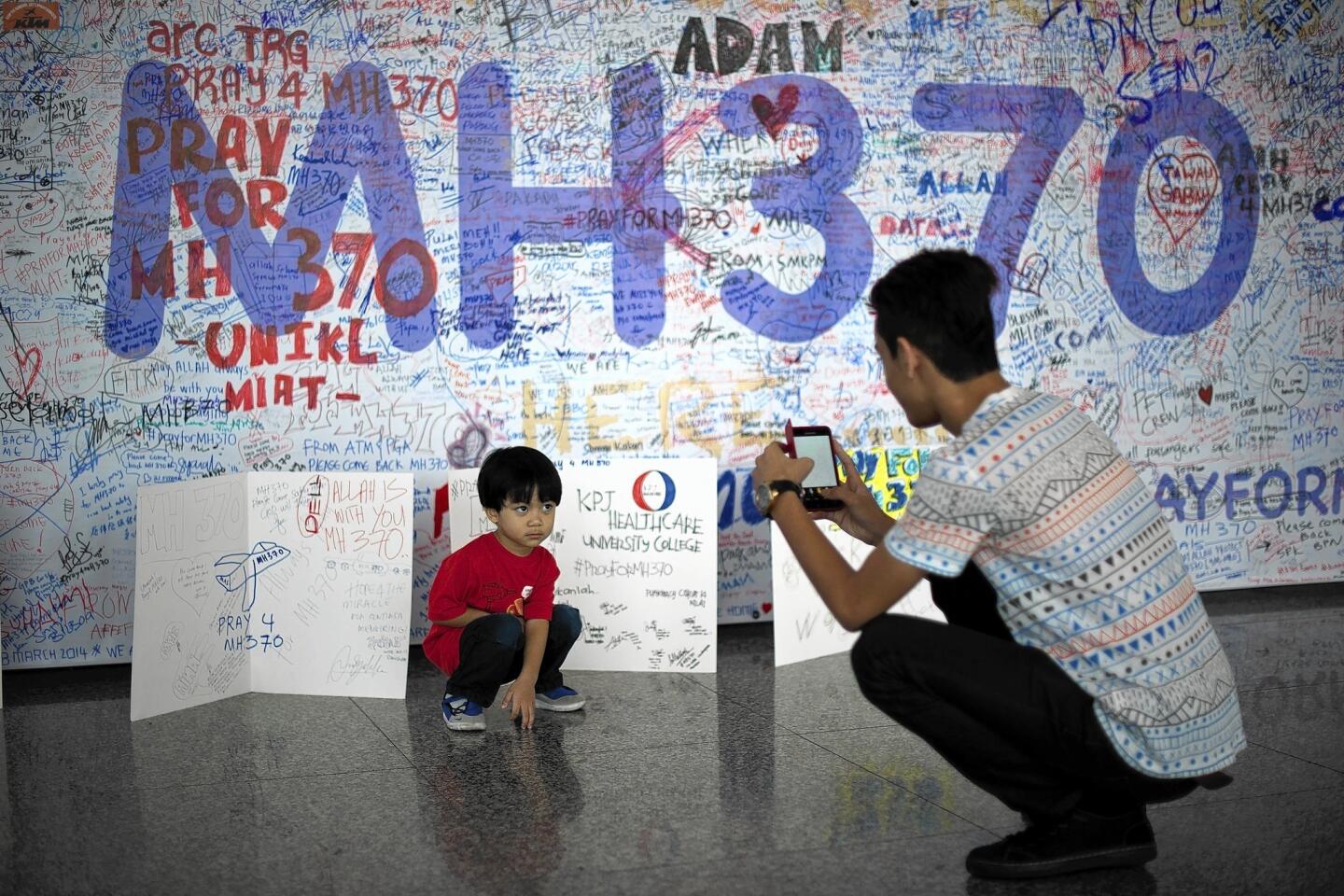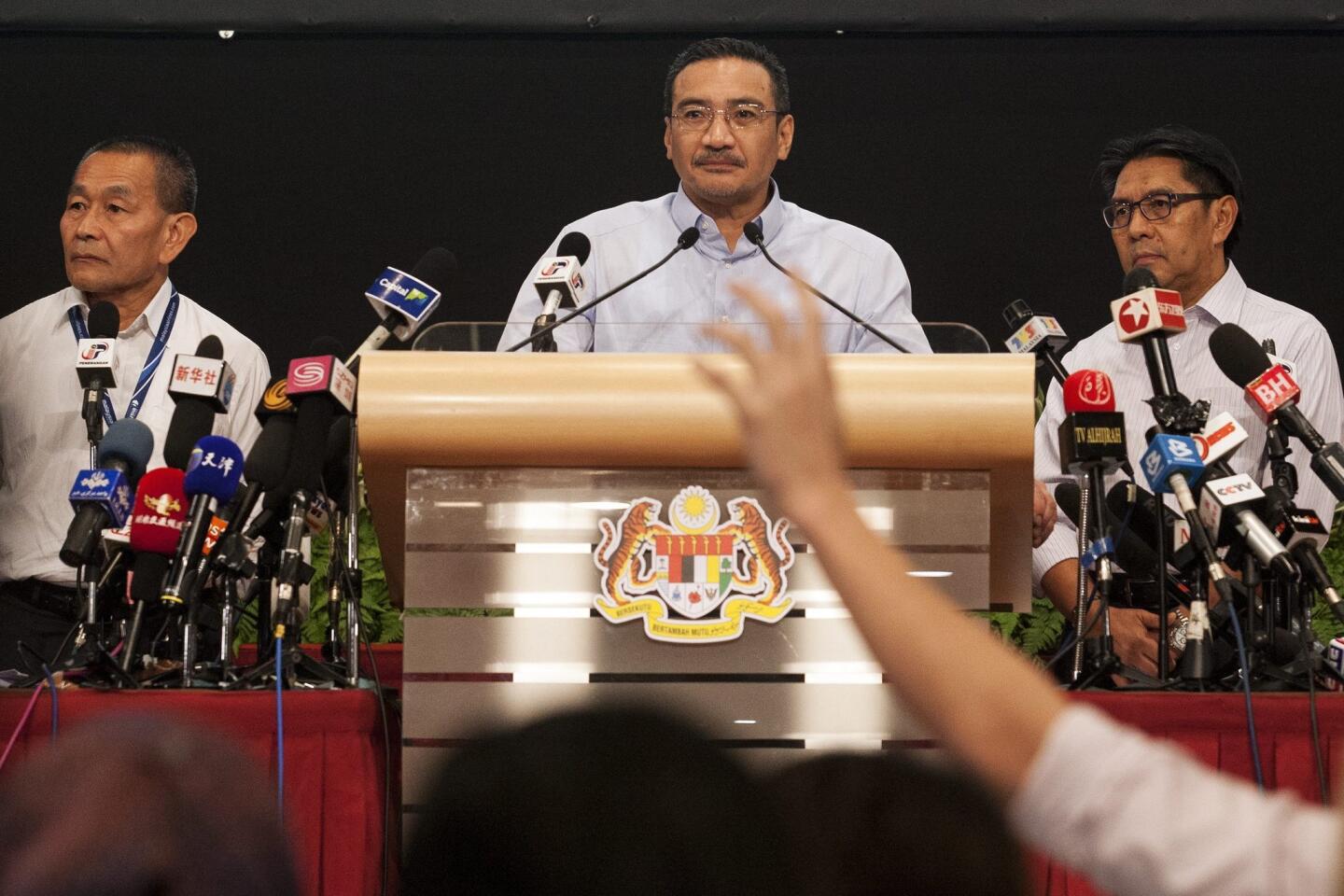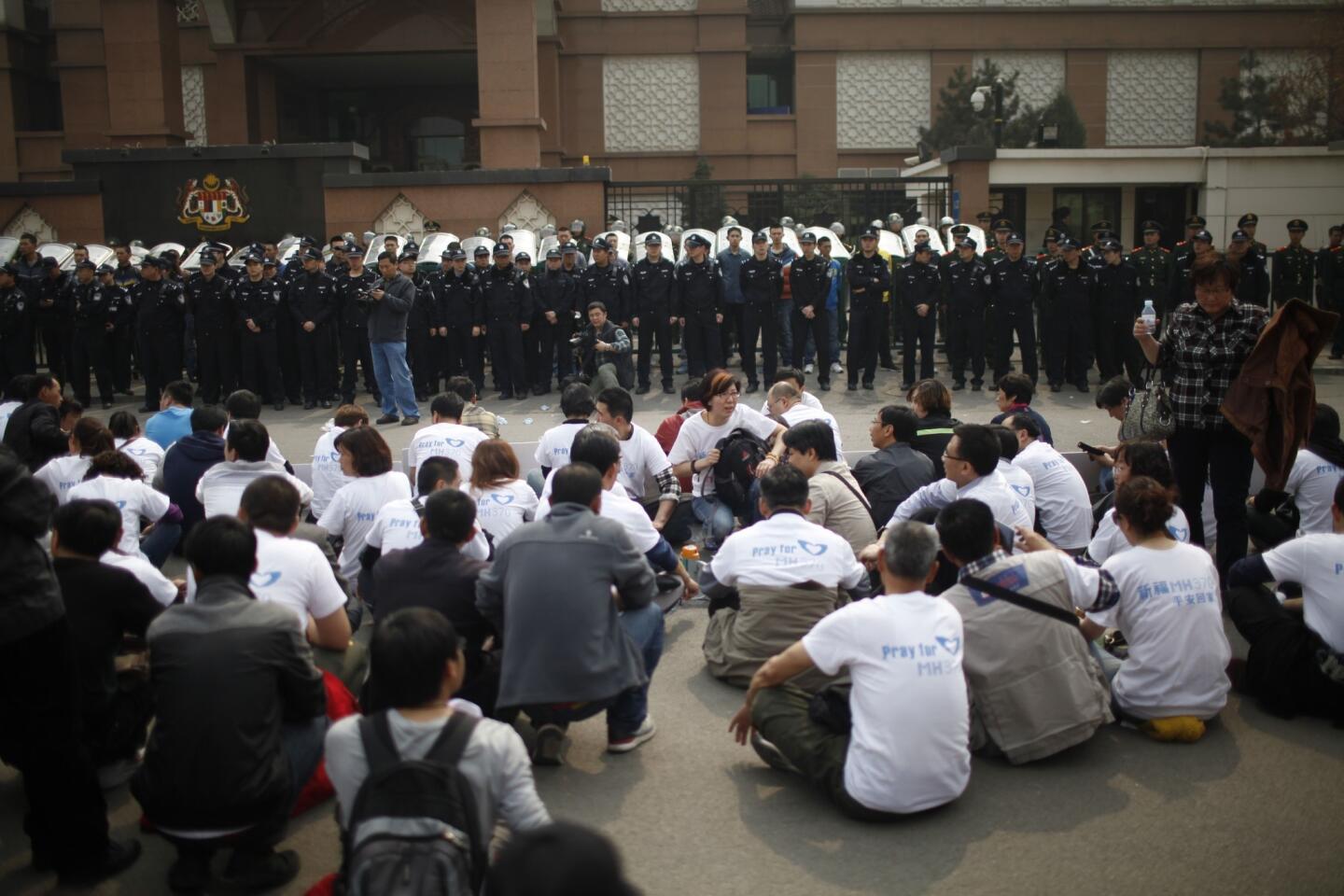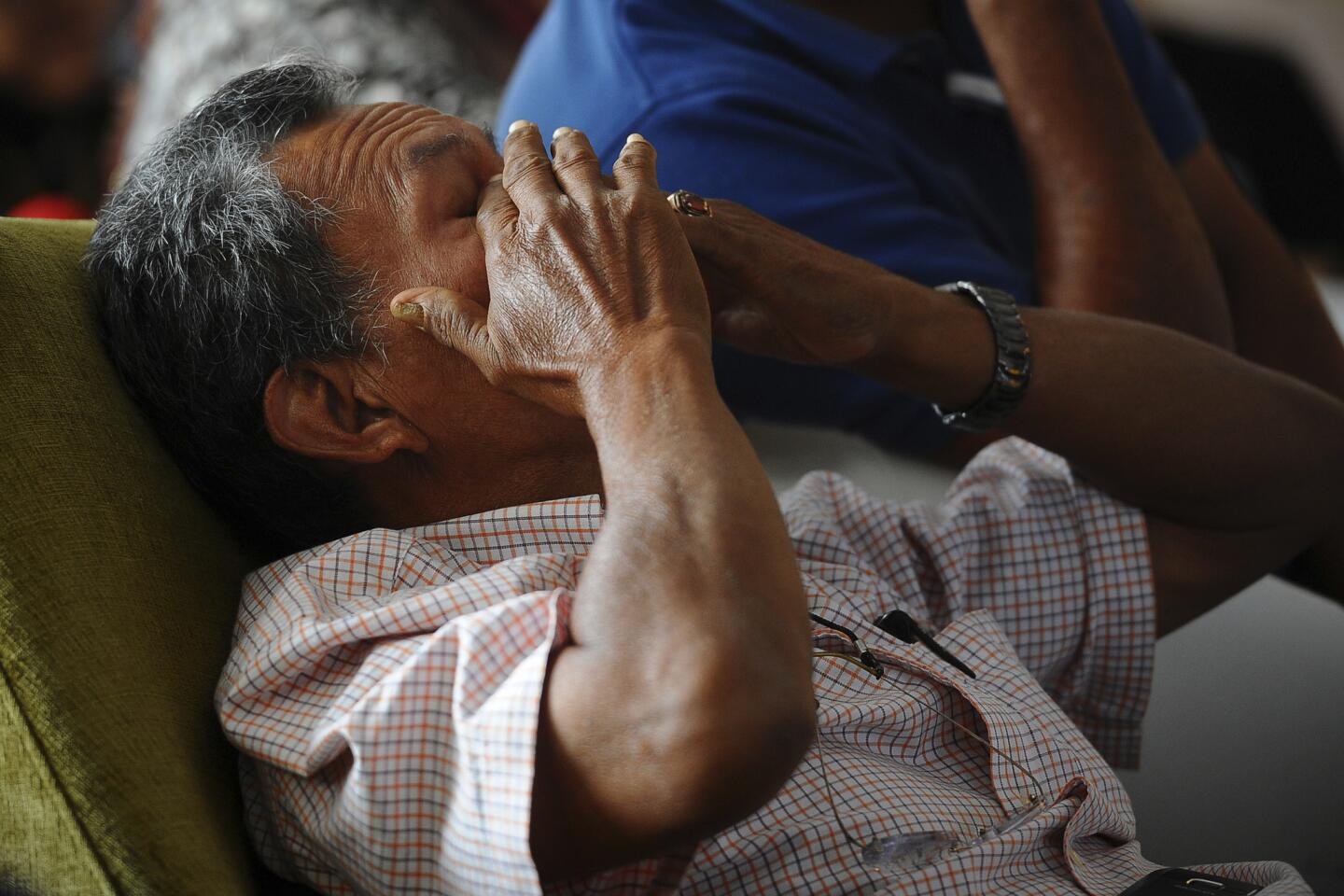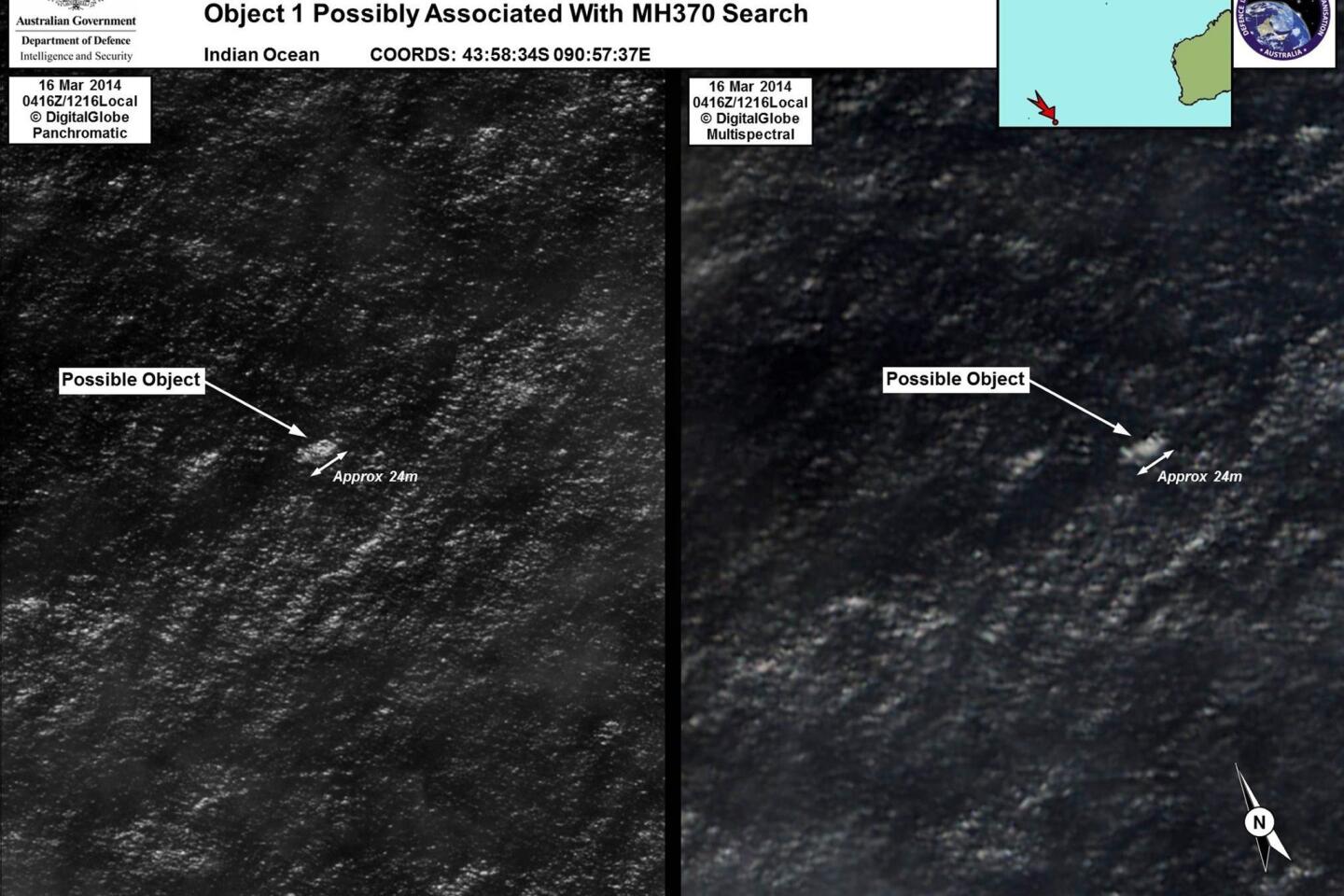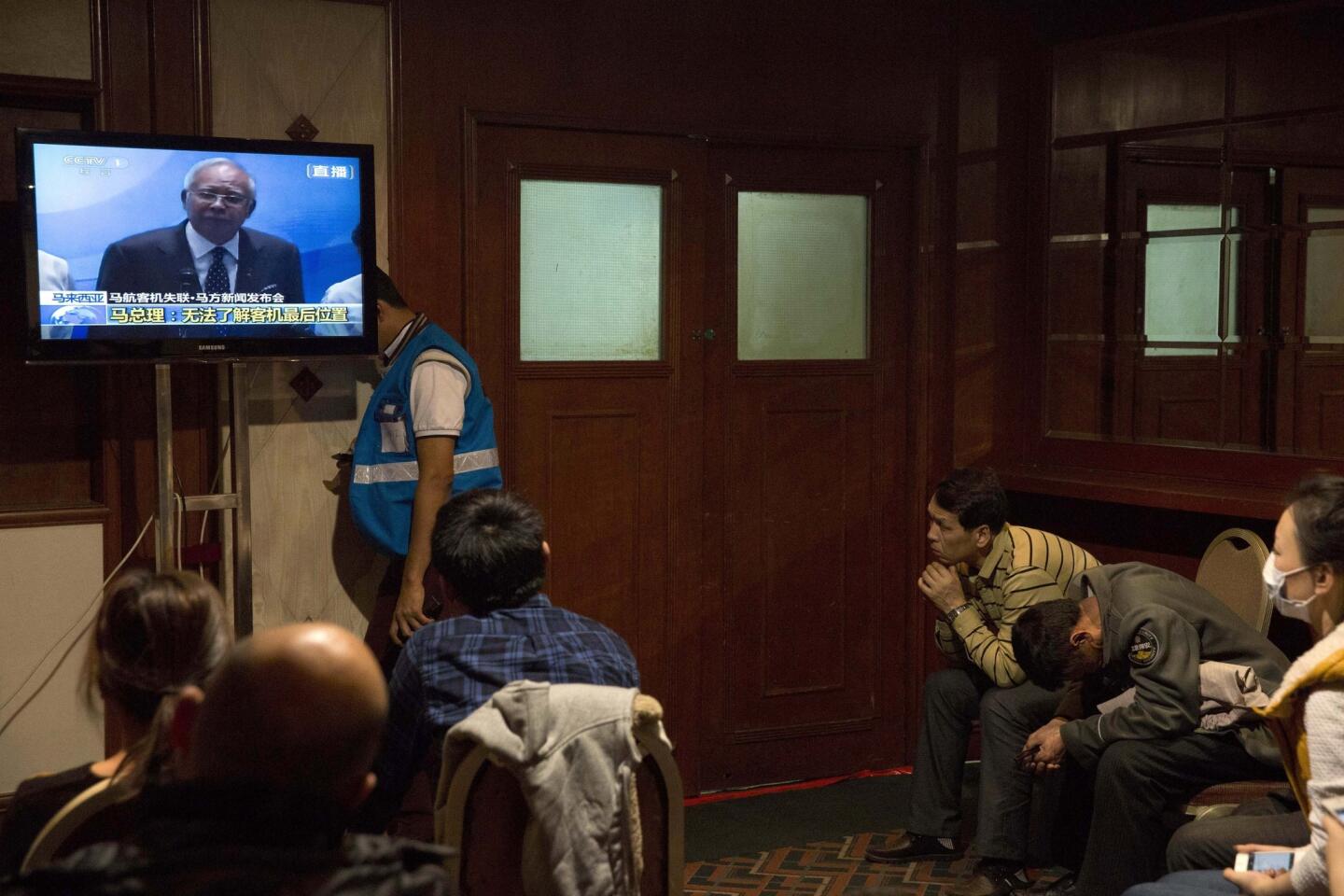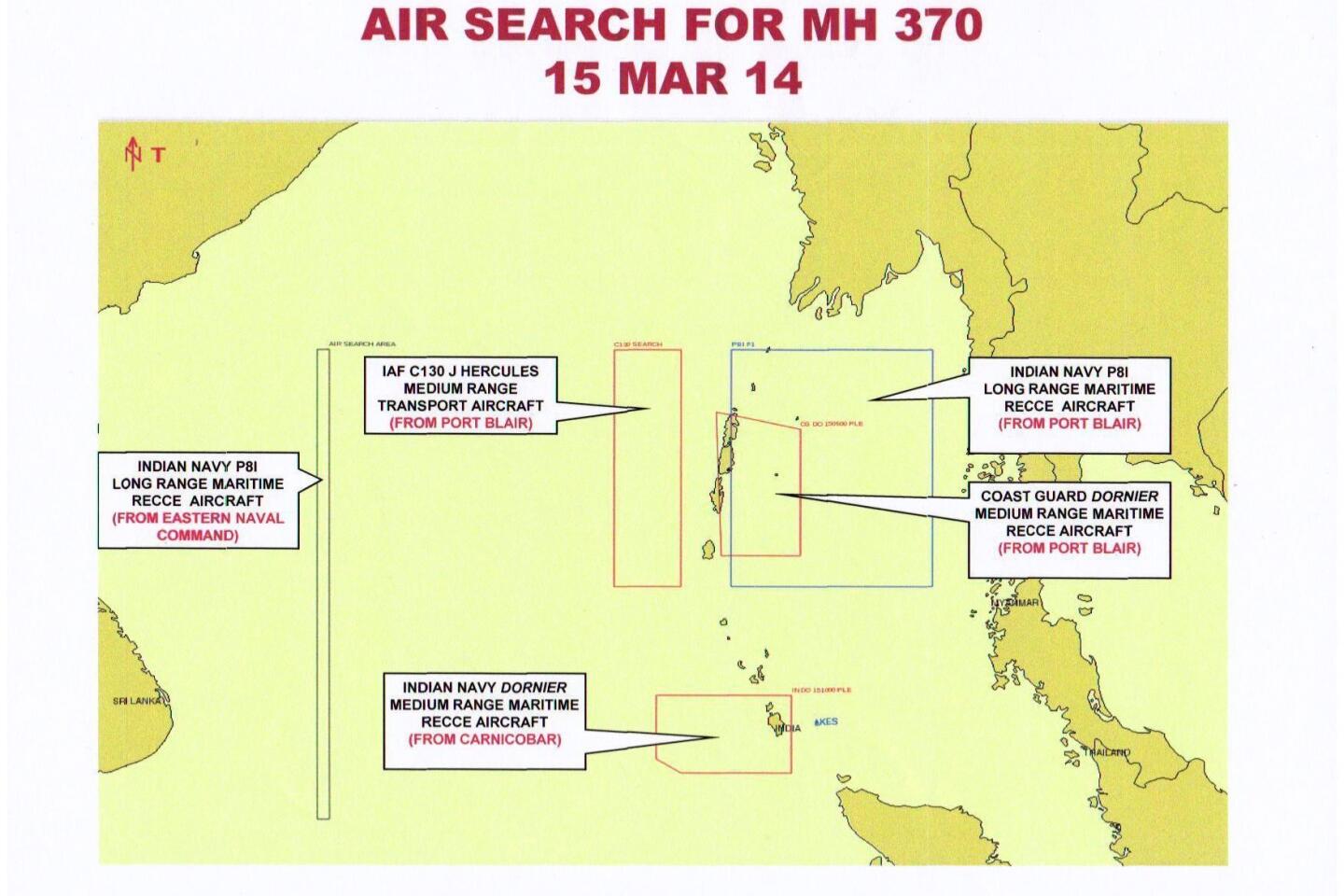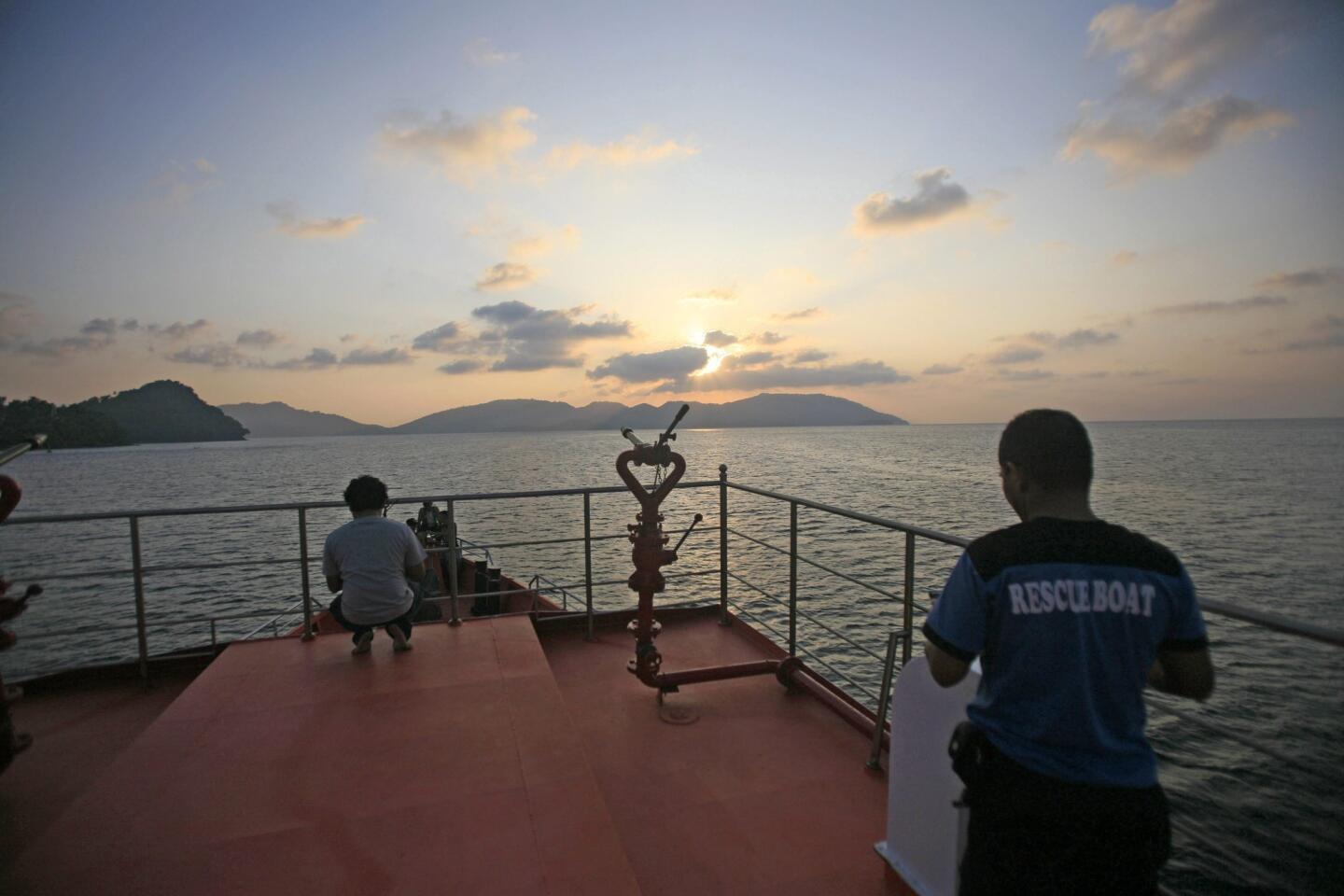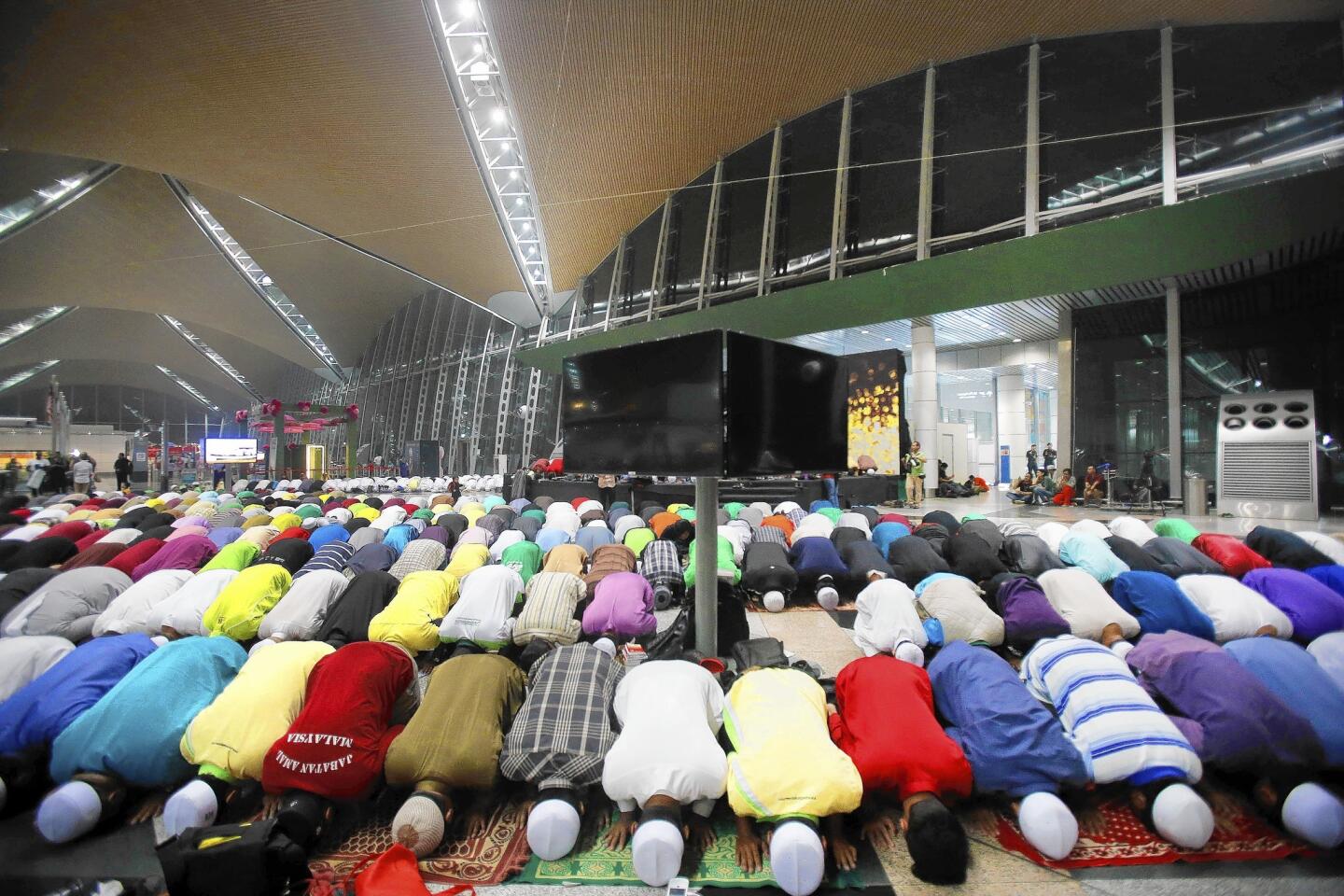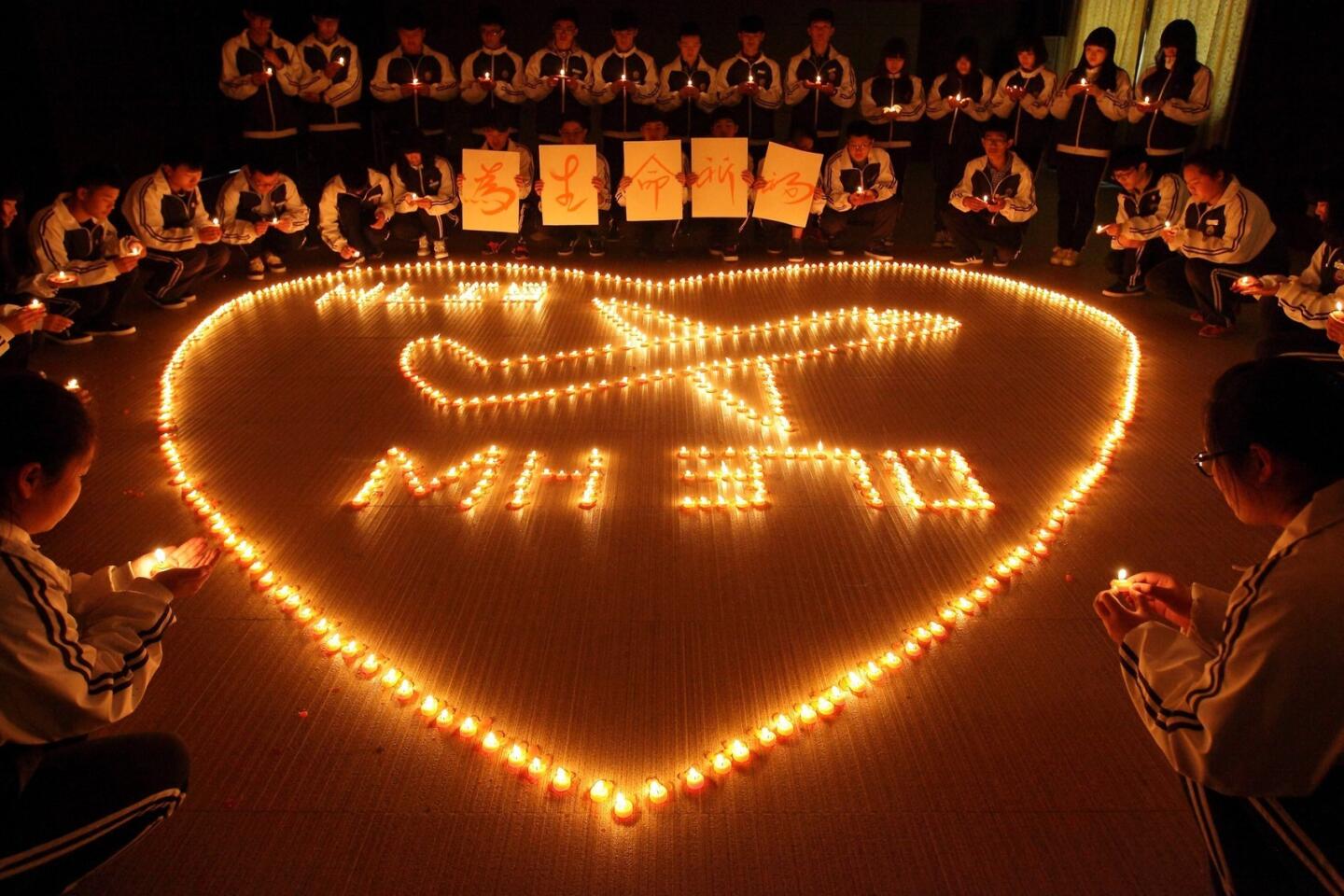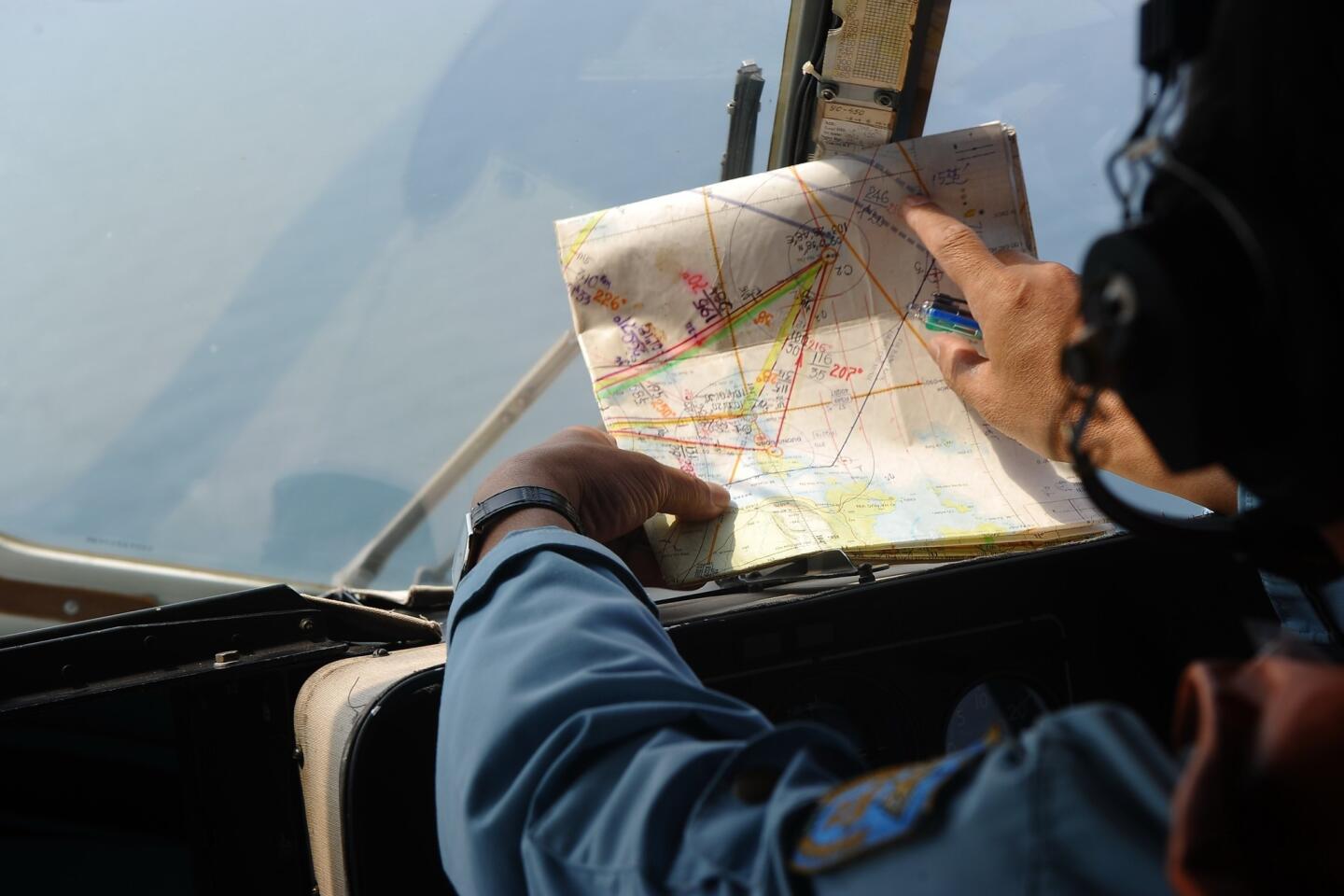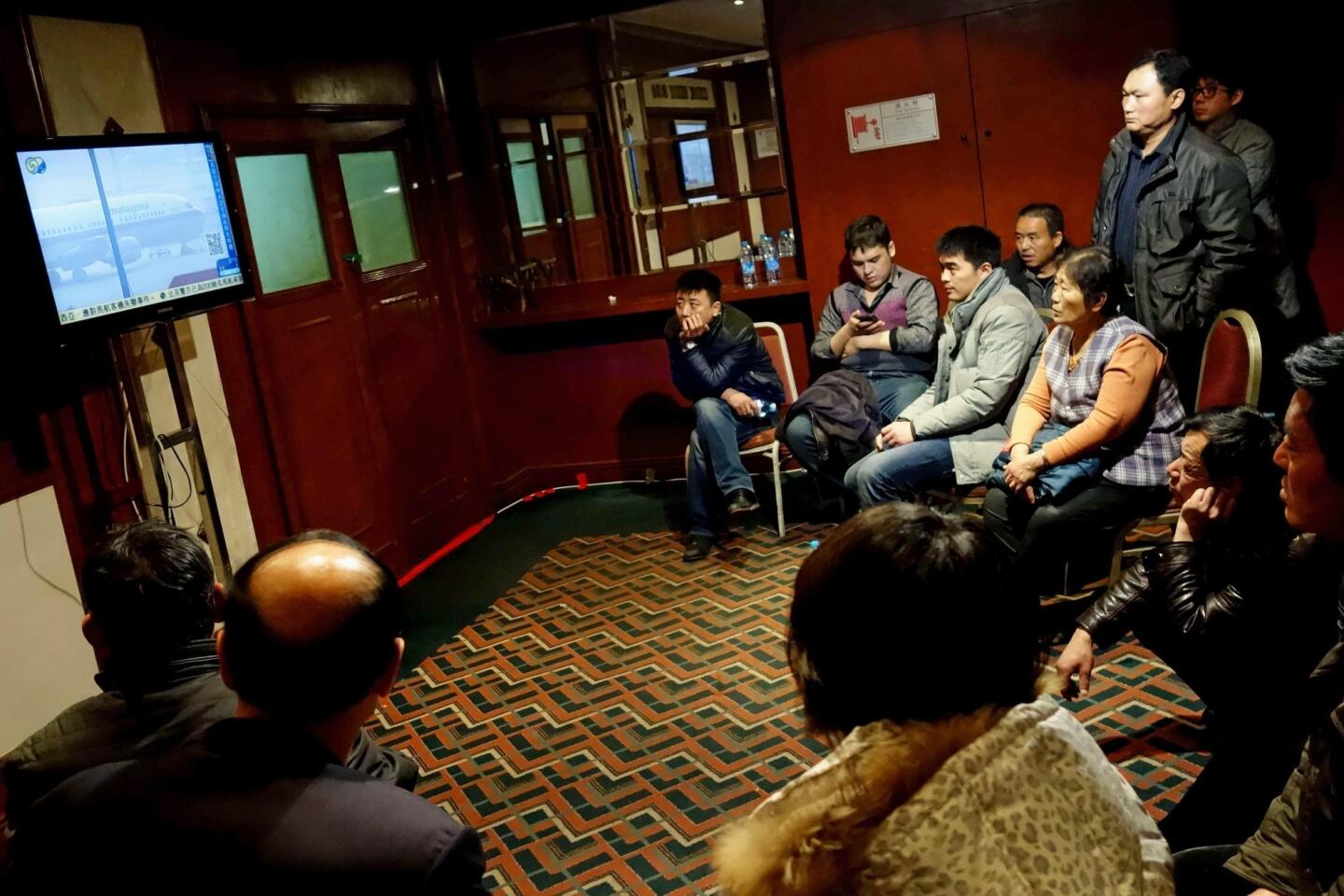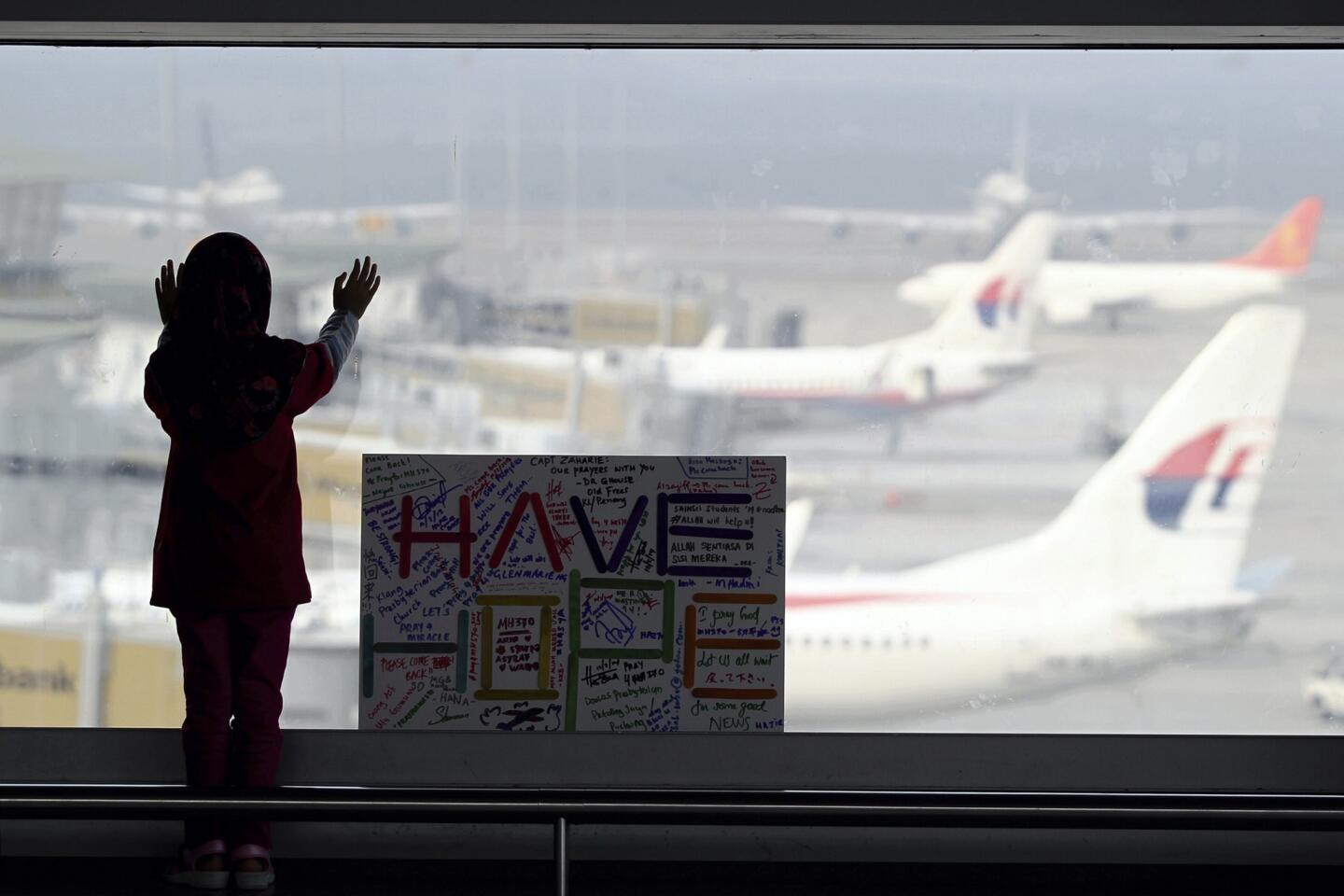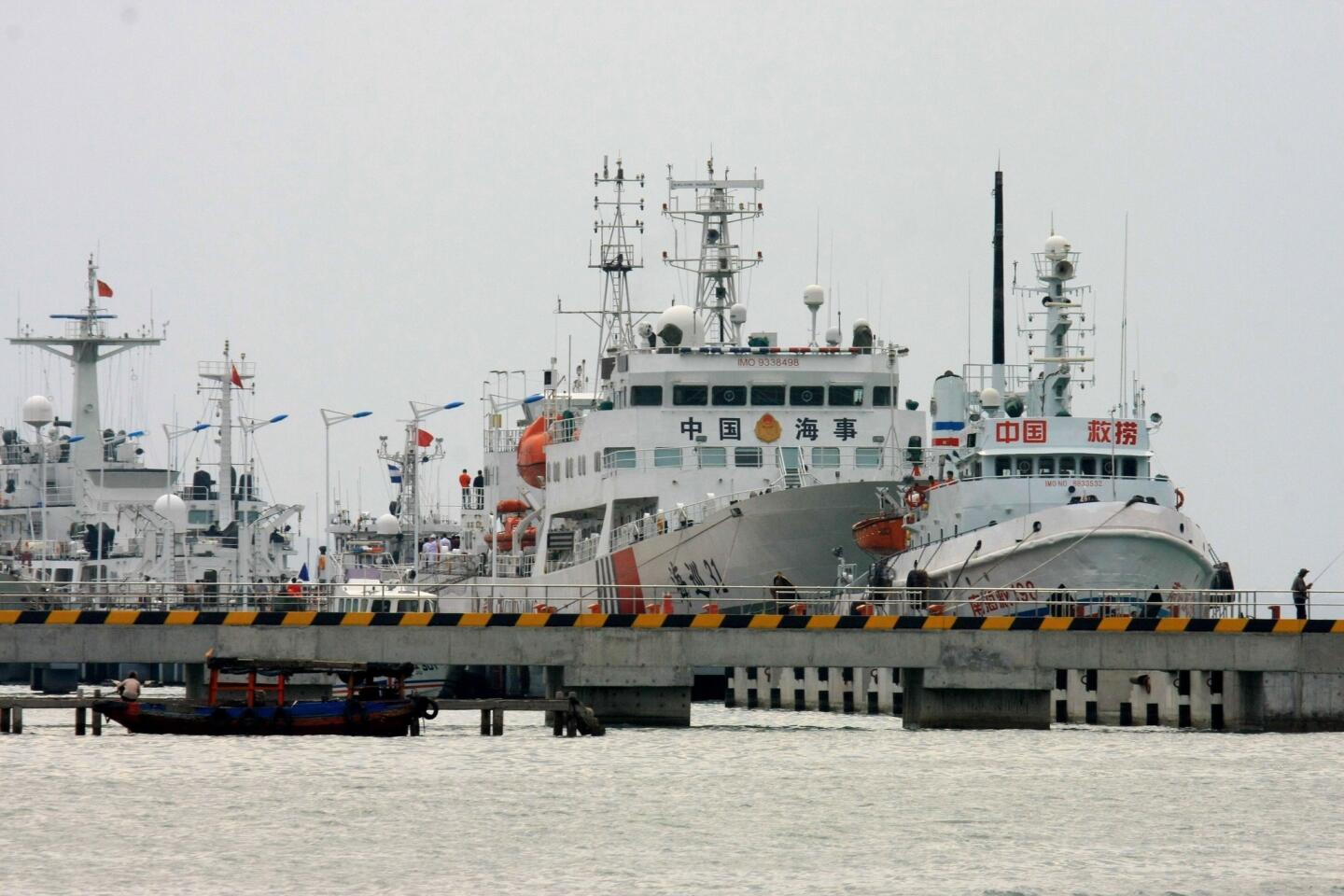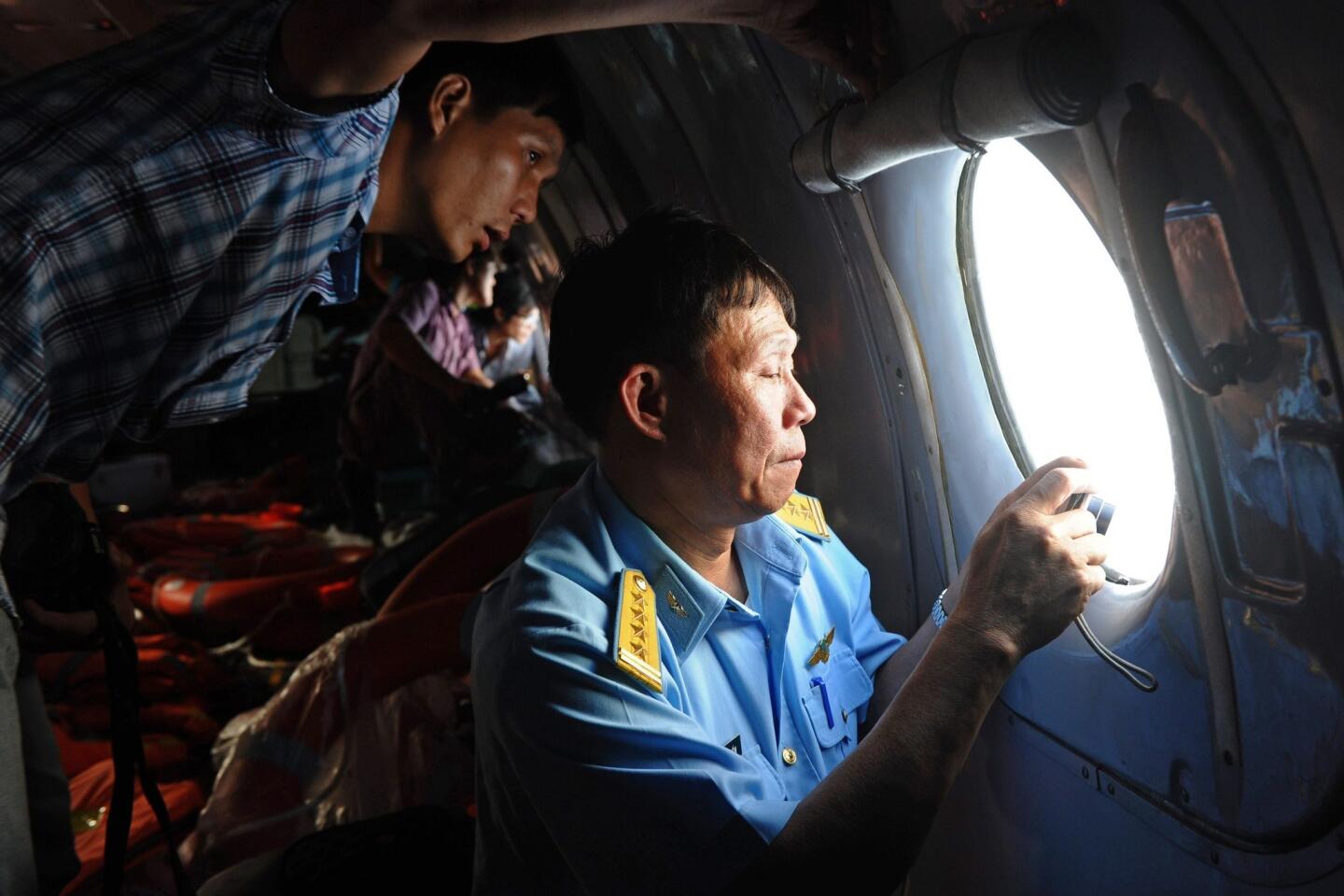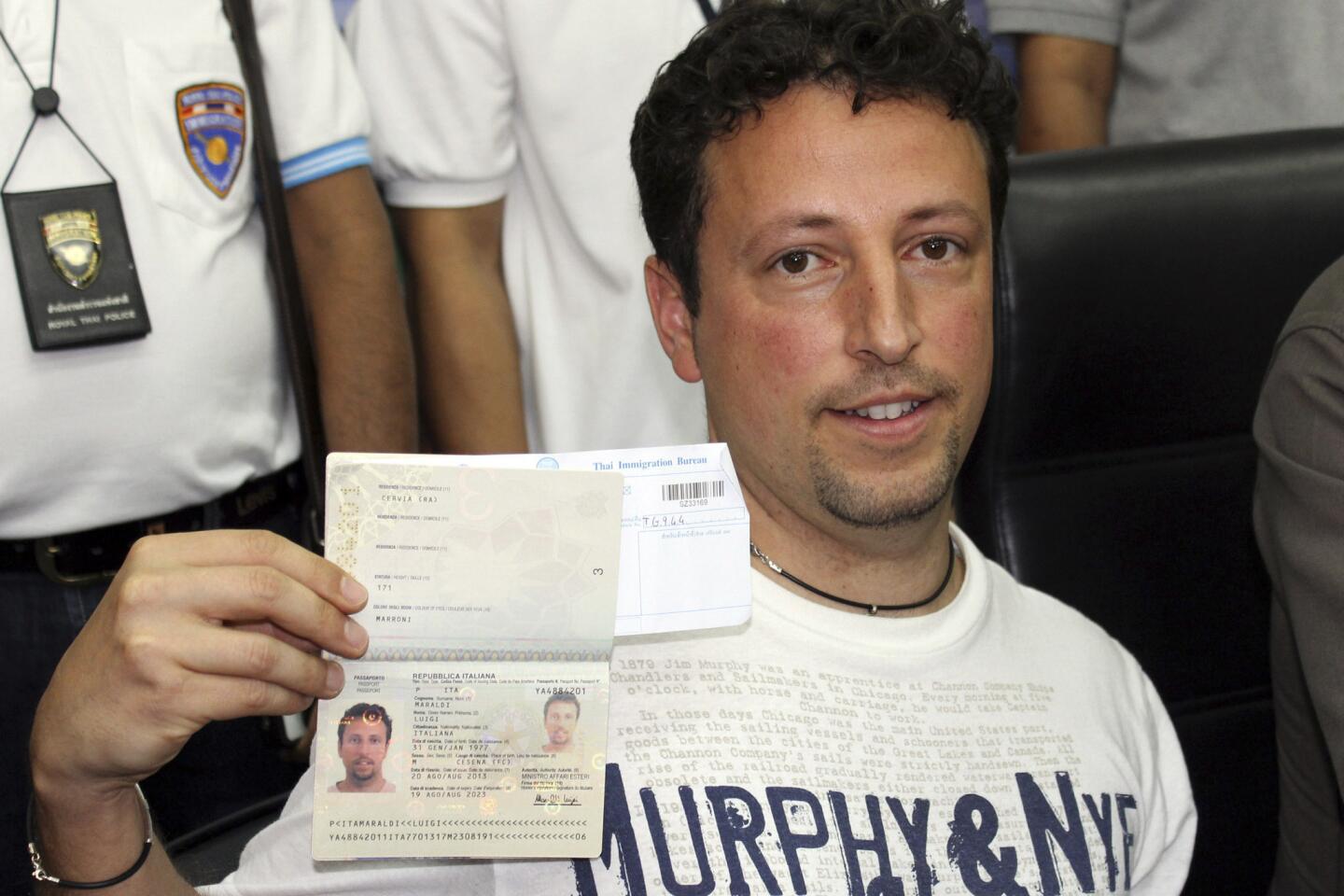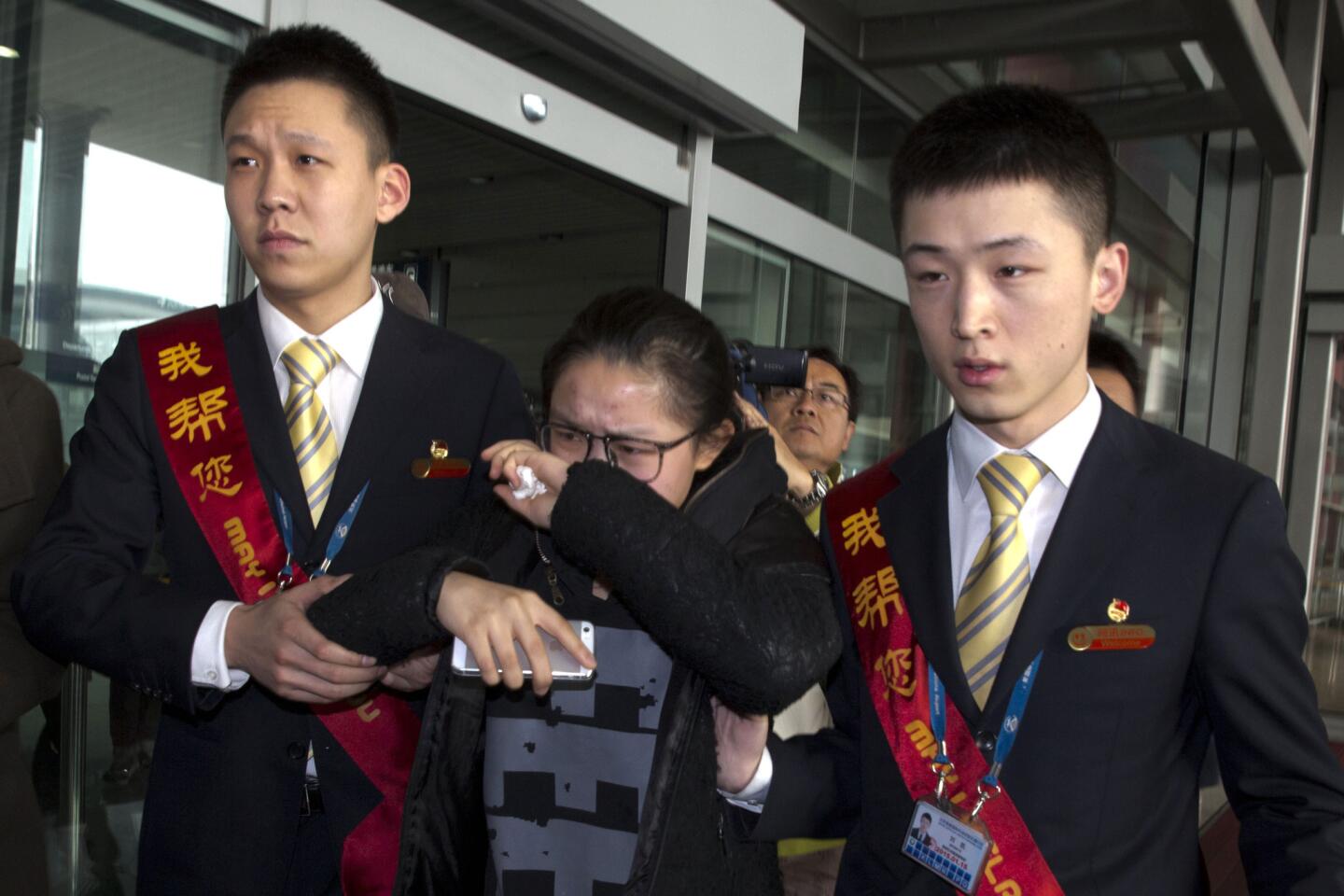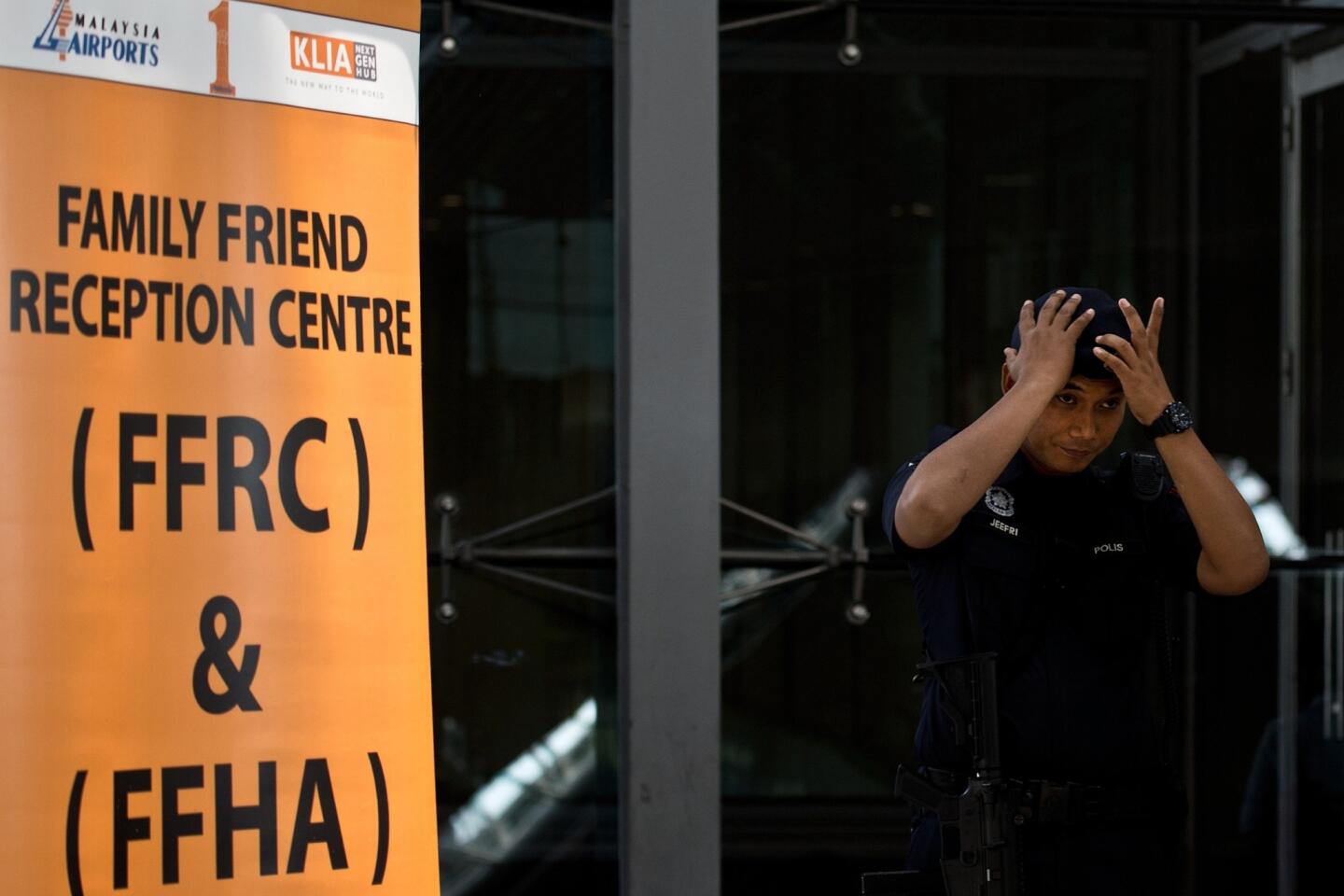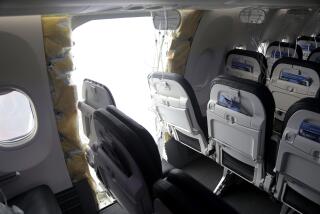Malaysia Airlines Flight 370 search is ‘unprecedented,’ official says
BEIJING — Investigators appeared no closer to locating Malaysia Airlines Flight 370 on Wednesday, as officials defended their handling of the search for the aircraft that went missing five days ago.
At the latest count, there were 42 ships and 39 aircraft scouring the waters and jungles of Southeast Asia, searching for the plane. Twelve countries are now involved with Japan, India and Brunei the latest to pitch in.
“This is unprecedented what we are going through,” Malaysia’s acting transportation minister, Hishamuddin Hussein, said at a stormy televised news conference late Wednesday in Kuala Lumpur. “Coordinating so many countries together is not something that is easy. We are looking at so many vessels and aircraft, so many countries.”
As of Wednesday evening, the fifth day of the search had passed without any signs of the plane, which was carrying 239 passengers and crew members.
That surpassed the 36 hours it took in 2009 to locate the first debris from an Air France flight from Rio De Janeiro to Paris that crashed into the Atlantic, a far deeper body of water than the Gulf of Thailand where the Malaysian flight was last detected.
At the news conference, Malaysian military officials attempted to clear up conflicting statements that had infuriated the Chinese and Vietnamese. They said that the aircraft’s last confirmed contact with the flight was at 1:30 a.m. Saturday, about 50 minutes after takeoff, over the Gulf of Thailand. However, military radar detected an unidentified aircraft at about 2:15 a.m., over the Strait of Malacca, along the west coast of the Malay peninsula, about 330 miles away to the west.
“We are not sure whether it is the same aircraft,’’ said Malaysian armed forces chief Zulkefli Mohamad Zin.
Nevertheless, the search has been expanded from the Gulf of Thailand to two new areas — the Malacca Strait and the South China Sea — and covers a total of 27,000 nautical square miles, officials said.
Earlier in the day, China and Vietnam lashed out at Malaysia.
“We’ve decided to temporarily suspend some search and rescue activities, pending information from Malaysia,” Vietnam deputy minister of transport Pham Quy Tieu told reporters Wednesday. “We’ve asked Malaysian authorities twice, but so far they have not replied to us.’’
China’s Communist Party-controlled Global Times blasted the Malaysian government’s conflicting statements in an editorial Wednesday.
“We don’t know which information published by Malaysia is true and which is false, or whether they have released all the information they have so far,’’ the newspaper editorialized on Wednesday. “Is the Malaysian military intentionally hiding something?’’
The Chinese foreign ministry was only slightly less withering, with spokesman Qin Gang saying at a briefing in Beijing: “Right now there is a lot of information, and it’s pretty chaotic, so up to this point we too have had difficulty confirming whether it is accurate or not.”
Of the 227 passengers aboard the missing plane, more than 150 were Chinese nationals. Some others were of Chinese ethnic origins.
At a hotel in Beijing, family members huddled in a conference room, waiting for any nugget of new information.
“My only hope is for my son to be back. That is more important than anything else,’’ murmured a woman in her 50s, her face red and puffy, who was assisted by two family members as she walked outside the room.
Throughout the day, there were tantalizing clues -- bits of debris plucked out of the busy shipping waters of the Malacca strait, a life raft, but nothing that was confirmed to come from the missing aircraft.
The Beijing News reported late Wednesday that a dead body wearing a life preserver was found in the region, but again there was no indication that the finding had anything to do with Flight 370.
Experts agreed that the search effort is unprecedented in its complexity, because of the number of countries involved, with competing territorial claims in the region.
“The plane is from Malaysia. Most of the area where they are searching is Vietnam. The flight was headed to Beijing and had so many Chinese passengers,’’ said Gao Yuanyang, a professor of at the Beijing University of Aeronautics and Astronautics. “It is rare to have so many countries involved in a plane crash.”
Jason Middleton, head of the school of aviation at the University of New South Wales in Sydney, said Malaysia had been right to start the search where the plane first lost contact with civilian radar, before expanding the search area.
“The farther away you search, the larger the search area becomes,’’ said Middleton. “I can’t say that any other country would have done it differently or much better.’’
Middleton theorized that if the aircraft had veered so far off course to the west, the pilots might have passed out for lack of oxygen.
“It suggests perhaps a decompression either because of an explosion or a problem with the ... structure. If they turned to the west, looking for the shortest way back to a place to land and passed out, the plane would have kept heading west,’’ said Middleton. “It is just a hypothesis that is not particularly likely, but all the likely options by now have been eliminated.’’
Twitter: @barbarademick
Nicole Liu and Tommy Yang of the Times’ Beijing bureau contributed to this report.
More to Read
Start your day right
Sign up for Essential California for news, features and recommendations from the L.A. Times and beyond in your inbox six days a week.
You may occasionally receive promotional content from the Los Angeles Times.
